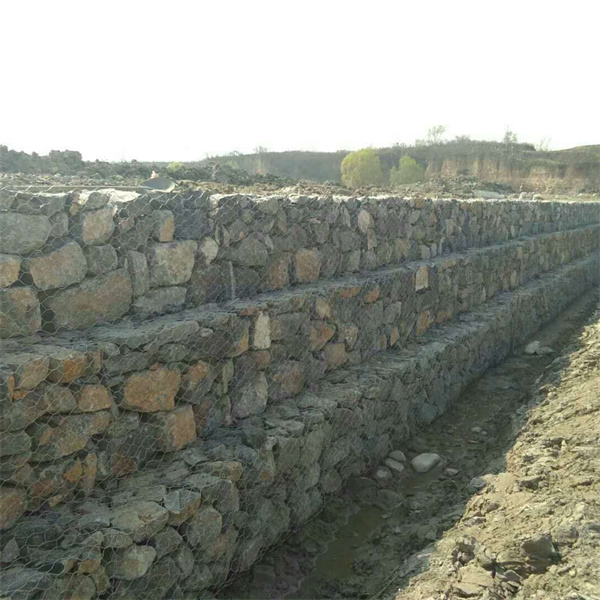12월 . 24, 2024 05:57 Back to list
Gabion Sound Barrier Production Company for Effective Noise Reduction Solutions
Exploring the Benefits of Gabion Sound Barriers A Guide for Manufacturers
In today’s world, noise pollution is an escalating concern, especially in urban areas where construction, traffic, and industrial activities contribute significantly to a cacophonous environment. To combat this issue, gabion sound barriers have emerged as an innovative solution. Gabions, traditionally known for their use in civil engineering projects, are now making waves in the noise abatement industry. This article introduces the concept of gabion sound barriers, outlines their benefits, and discusses key considerations for manufacturers in this niche market.
What Are Gabion Sound Barriers?
Gabion sound barriers are structures made of wire mesh baskets filled with rocks, stones, or other materials. They are designed to absorb and deflect sound waves, thereby reducing noise pollution in surrounding areas. Unlike traditional sound barriers, which may consist of concrete or wood, gabion structures provide a more environmentally friendly option. Their natural appearance also allows them to blend seamlessly into the landscape, making them aesthetically appealing for various applications.
Advantages of Gabion Sound Barriers
1. Eco-Friendly Solution Gabions utilize natural materials, making them a sustainable choice for sound mitigation. They promote ecological balance by allowing vegetation growth and serving as habitats for local wildlife. This aligns with the growing trend toward environmentally responsible construction practices.
2. Cost-Effectiveness Gabion barriers are generally more affordable than conventional sound barriers. The materials used are often locally sourced, which reduces transportation costs. Additionally, their installation can be less labor-intensive, further cutting down on project expenses.
3. Durability and Maintenance Gabion structures are robust and capable of withstanding harsh weather conditions, including heavy winds and flooding. Unlike wood and some other materials that may deteriorate over time, gabions are designed for longevity. Their maintenance requirements are minimal, primarily involving occasional inspections and repairs of the wire mesh.
4. Customizability Gabion sound barriers can be easily customized to fit specific requirements. Manufacturers can alter the size, shape, and fill material based on the unique needs of a project. This flexibility makes gabions suitable for various applications, from highways and railways to residential areas and industrial sites.
5. Effective Sound Absorption The mass and density of the stone fill within gabions help in absorbing and deflecting sound waves. Studies have shown that gabion barriers can significantly reduce noise levels, making them an effective solution for mitigating noise pollution in noisy environments.
gabion sound barrier manufacturer

Considerations for Manufacturers
To successfully tap into the growing market for gabion sound barriers, manufacturers must consider several factors
1. Material Sourcing The choice of fill material can greatly affect the performance of gabion barriers. Manufacturers should focus on sustainable sourcing practices and ensure the materials are appropriate for the necessary sound absorption qualities.
2. Regulatory Compliance Understanding local regulations regarding noise barriers and construction practices is essential. Manufacturers must ensure their products meet all legal requirements and safety standards.
3. Design and Engineering Collaborating with engineers and architects can help manufacturers create effective and aesthetically pleasing designs. Investing in research and development to enhance the sound-dampening properties of gabions can also set a manufacturer apart from competitors.
4. Marketing and Education As gabion sound barriers are still relatively new to some markets, manufacturers should invest in marketing and educational efforts. Highlighting the benefits of gabion barriers through case studies, testimonials, and demonstrations can help raise awareness and drive demand.
5. Installation Services While gabions can be simpler to install than traditional barriers, providing installation services or training for contractors can enhance customer satisfaction. This added value can also differentiate a manufacturer in a competitive landscape.
Conclusion
Gabion sound barriers represent a forward-thinking solution to the pressing issue of noise pollution. With their combination of environmental sustainability, cost-effectiveness, and practicality, they are poised to gain popularity among various sectors. Manufacturers who pay attention to material quality, regulatory compliance, and customer education will find significant opportunities in this expanding market. As the demand for quieter, more serene environments continues to grow, gabion sound barriers will undoubtedly play a vital role in shaping the soundscapes of our future cities.
-
HESCO Gabion Baskets for Coastal Erosion Prevention
NewsAug.22,2025
-
Longevity and Durability of River Rock Gabion Walls
NewsAug.22,2025
-
How to Integrate Gabion 3D Walls in Urban Planning
NewsAug.22,2025
-
Reno Mattress Gabion Applications in Civil Engineering
NewsAug.22,2025
-
How to Install Wire Mesh for Gabion Baskets Properly
NewsAug.22,2025
-
Best Materials for Filling a Chain Link Gabion
NewsAug.22,2025
-
Wire Mesh Thickness Impact on Gabion Wall Load Bearing
NewsAug.12,2025






